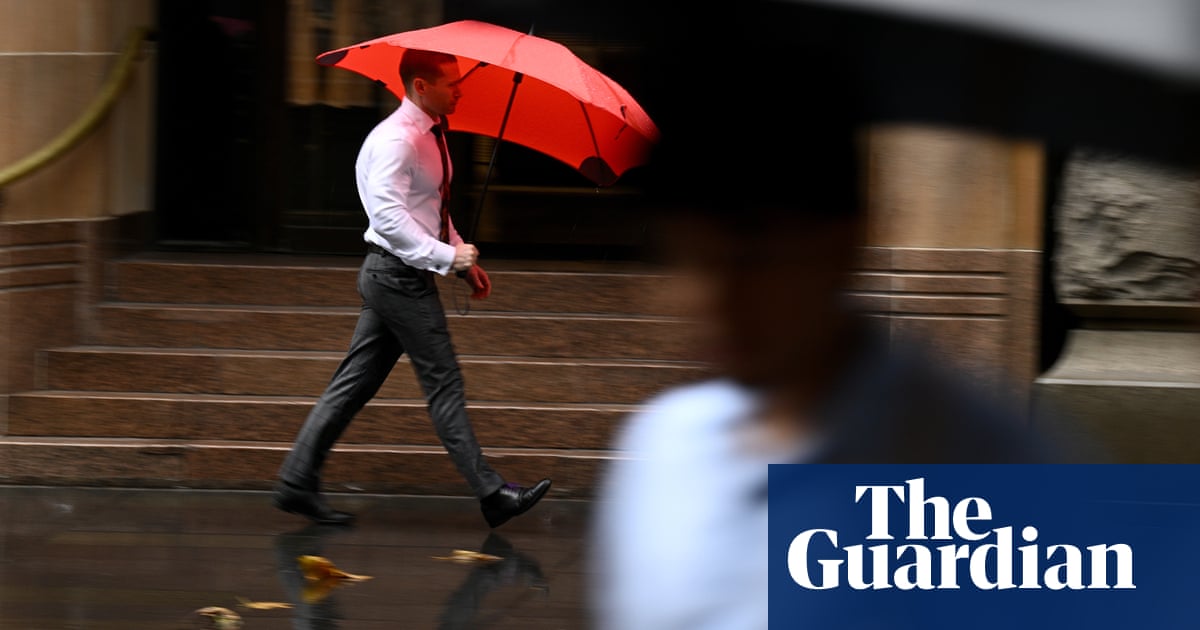Winter is coming for south-eastern Australia this weekend, with the Bureau of Meteorology forecasting rain, hail and even snow for some parts of the country.
InNew South Wales, wet and windy conditions could see a “really rough end to the weekend”, Miriam Bradbury, a senior meteorologist at the bureau, said.
On Sunday, that “double whammy” of heavy rain and strong, gusty winds would focus on the state’s south coast before shifting towards the Central Coast on Monday and Tuesday, creating dangerous driving and hazardous surf conditions, she said.
Maximum temperatures in Sydney were expected to reach 21C on Saturday and 18C on Sunday, with a medium to high chance of showers, and the potential for thunderstorms near the coast on Sunday.
In Melbourne, 14C was the forecast maximum for Saturday, with a high chance of showers. Sunday would bring patches of morning frost with a high of 15.
Wind gusts of 70 to 90km/h were expected to ramp up across the south coast of NSW from Sunday, increasing through the Central Coast on Monday, potentially extending into Tuesday.
The Hunter and Central Coast would be the wettest, with two-day rainfall totals forecast to exceed 150mm, Bradbury said.
Sign up to get climate and environment editor Adam Morton’s Clear Air column as a free newsletter
In Victoria and Tasmania, a cold front in the south-east would deliver “a wintry blast” that could see maximum temperatures in the low teens. “It’s going to be a very, very chilly weekend,” she said.
Many places in those states would experience their coldest day of the year so far. Some might even see hail or snow.
“The overnight temperatures will drop as well, particularly from Sunday,” Bradbury said. “Most areas will see night-time conditions below 5C, with parts of Tasmania, regional Victoria and southern South Australia, expecting temperatures below zero.”
Hobart was expected to reach a top of 11C on Saturday and 13C on Sunday.
There was potential for snow at 500 metres over Tasmania, and at 1,000 metres in Victoria. “We could see a couple of flurries about the Grampians,” Bradbury said.
In South Australia, which remained in thegrip of a record dry, showery activity would likely be confined to the coast and “on the low side of things” – less than 10 to 15mm was expected – she said.
“Unfortunately, for those very, very dry areas through the east and south-east in particular, we’re not looking at any significant rain over the next seven days,” she said.
Along with much-needed rain, the state was holding out for strong westerly winds in order to break up a toxic algal bloom, which hadlingered on the state’s coastline since March.
Sign up toClear Air Australia
Adam Morton brings you incisive analysis about the politics and impact of the climate crisis
after newsletter promotion
SA’s best chance of wind was on Saturday, Bradbury said, when cool, southerly winds were forecast for southern and coastal areas.
Adelaide would see maximum temperatures of 17C across the weekend, with showers on Saturday clearing and mostly sunny by Sunday.
Meanwhile south-east Queensland would see showers and thunderstorms on Saturday, clearing by the afternoon. Brisbane could expect a top of 26C and a high chance of showers on Saturday, which were expected to ease on Sunday with a top of 26C.
In Western Australia, settled and unusually warm conditions continued, Bradbury said.
“Western Australia, particularly the south-west land division, is remaining 2 to 5C above average through the weekend into early next week,” she said.
“For Perth, that means we’re going to see temperatures in the mid to high 20s all the way through to about next Tuesday.” Mostly sunny, Perth was expected to reach 26C on Saturday and 27C on Sunday.
Sunny and a top of 32C was expected for Darwin. Canberra would reach 18C on Saturday and 13C on Sunday, according to the BoM.
